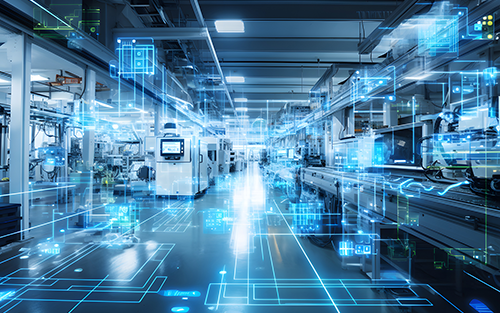
As industry adopts artificial intelligence (AI), the question arises how energy is being optimised in the age of big data. As data demand escalates, managing cooling conditions becomes increasingly challenging. Managing airflow is also a daunting task, given the dynamic nature of data centres and the unpredictable demands of IT equipment. Experts believe that AI can play a role in reducing these loopholes.
By 2025, half of cloud data centres will deploy advanced robots with AI and ML capabilities, resulting in 30 percent higher operating efficiency, as per insights from Gartner. In conversation with FE, Pankaj Sharma, EVP, secure power division and data centre business, Schneider Electric, on how AI is contributing towards a sustainable high-performance computing era. (Edited excerpts)
How are AI algorithms being utilised to optimise the energy efficiency of big data centres, reducing their carbon footprint while maintaining high-performance computing?

How AI predictive maintenance is redefining elevator reliability

How AI startups are contributing to environment and social impact

Data-driven cultivation: Leveraging AI and drones to maximise agricultural productivity

AI-powered trading platforms: Analysing and predicting stock market movements
AI-powered systems can distribute computing resources based on current demands. This approach ensures that resources are allocated efficiently, reducing energy waste and minimising downtime. Whether it’s a large AI training data centre or a smaller inference data centre, it is essential that they are highly power and water-efficient and that their materials are circular. AI models can analyse cooling systems to ensure all consumed power is used efficiently.
What role does AI play in managing and optimising cooling systems within big data centres, and how does this affect overall energy consumption?
In traditional data centres and distributed IT sites, cooling can account for about 20-40 percent of the energy used. This is where AI steps in, aiming to minimise cooling power and increase efficiency as the pressure to reduce energy consumption and carbon emissions mounts.
For example Schneider Electric’s EcoStruxure IT Advisor Cooling Optimise is an AI-based, closed-loop control system that automatically and continuously adjusts airflow to stabilise server inlet temperatures. It balances the need for cooling with the lowest possible energy use.
Can collaboration of AI and computing help big data centres in reducing operational costs, particularly in terms of energy consumption, maintenance, and human resource allocation?
AI can enhance workload distribution, automate maintenance tasks, and ensure optimal resource utilisation, leading to cost savings. The increase in AI workloads drives a growing need for faster computing, leading to significant orders to upgrade existing data centres. With the conversion and reactivation of current facilities to meet accelerated computing needs, it can bring a change.
Several technologies and design strategies are being investigated to meet the challenges posed by AI workloads. For example, liquid cooling systems provide a more effective and environmentally friendly way of removing heat from high-performance computing (HPC). By using neuromorphic computing, which attempts to replicate the structure and function of the human brain to construct more effective AI systems, it might reduce energy consumption and processing delay of AI workloads.
Can AI-driven technologies in big data centres help in achieving sustainability goals, regarding energy use and reducing electronics?
With insights from JLL, a global real estate consultant, energy consumed by data centres doubles every four years, accounting for about 4 percent of greenhouse gas emissions worldwide. It highlights that environmental, social and governance (ESG) requirements can directly influence the growth of this market. As a result, becoming more sustainable and socially responsible needs to be looked at.
To address these challenges, modern data centres need to use AI in conjunction with automation, IoT, and machine learning. AI and robotics solutions not only help improve energy efficiency, reduce carbon emissions and provide predictive maintenance but can also automate routine activities, reducing the need for manual labor. AI can also predict power outages, reduce maintenance costs, and achieve higher performance.
What are the emerging trends in using AI and computing in big data centres, and how can these shape the future of data processing and storage?
I believe that AI and other emerging technologies are putting pressure on data centres to adapt to new demands. Data centres can be at the forefront of providing the necessary infrastructure to support these demands. They can also leverage innovations in infrastructure and cooling technologies to improve performance and efficiency. Energy efficiency can also be a key area, and the industry is looking to emerging technologies like AI, automation, and machine learning to drive further innovations.
How does Schneider plan to utilise its new factory in India as a hub for innovation, specifically in advancing cooling technologies for global markets?
The new factory will specialise in producing in-row cooling systems, chillers, PAC, and PAHU, to meet the increasing demand for cooling products both domestically and internationally. The factory will specialise in customised thermal management solutions for data centres, telecom, and commercial and industrial applications, catering to the diverse needs of global and domestic markets. Cooling can play a crucial role in today’s technological advancements, and since data centres are projected to consume one-fifth of the global power supply by 2025. To prevent massive damage and disruptions in data centres, it’s important to have sustainable solutions. Therefore, we aim to provide sustainable solutions from our cooling factory.
Elaborate on the investments related to this new factory.
The new factory covers ~ 6.5 acres and has been built with an investment of Rs 100 Crores (~ 10Mn Euro). 85 percent of the products manufactured in this factory will be exported, especially catering to the data centre segment, as well as to buildings, industry, and infrastructure, among others.
Follow us on Twitter, Facebook, LinkedIn







